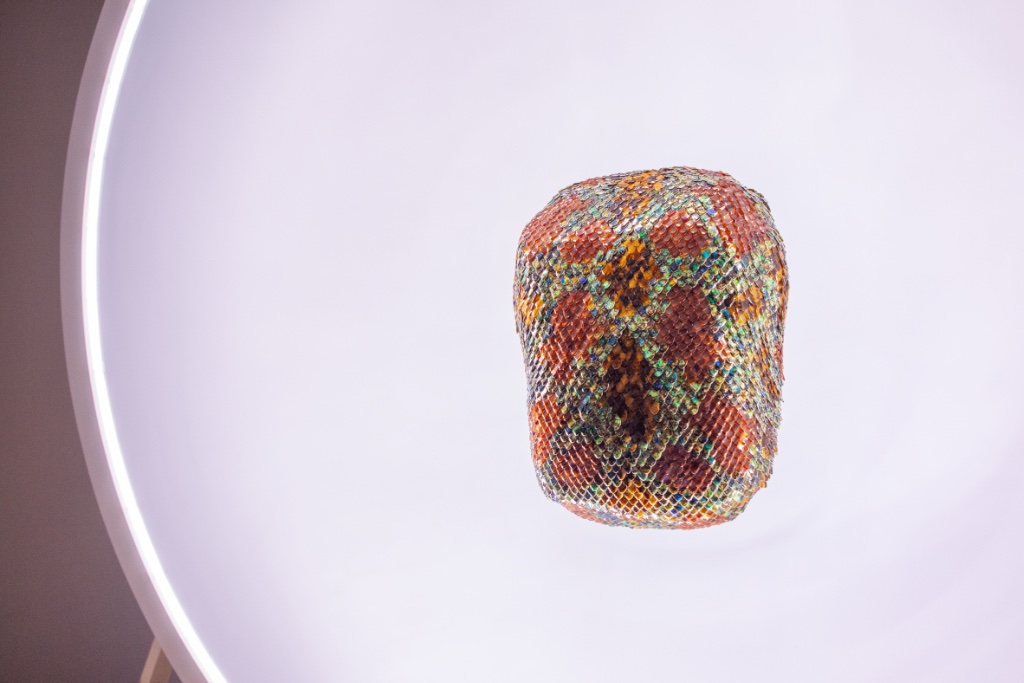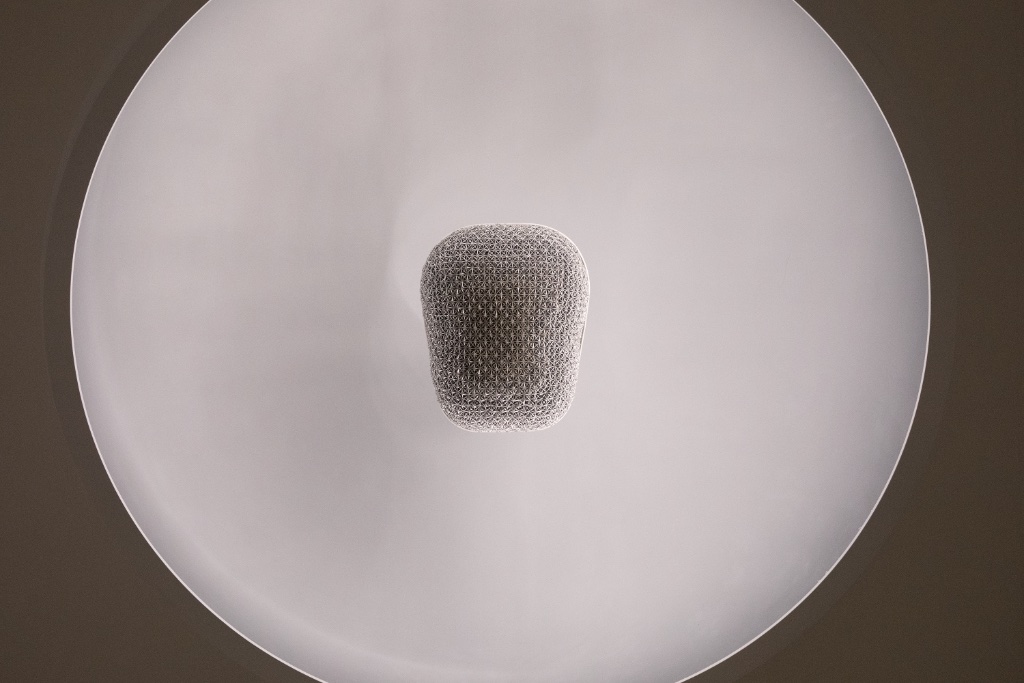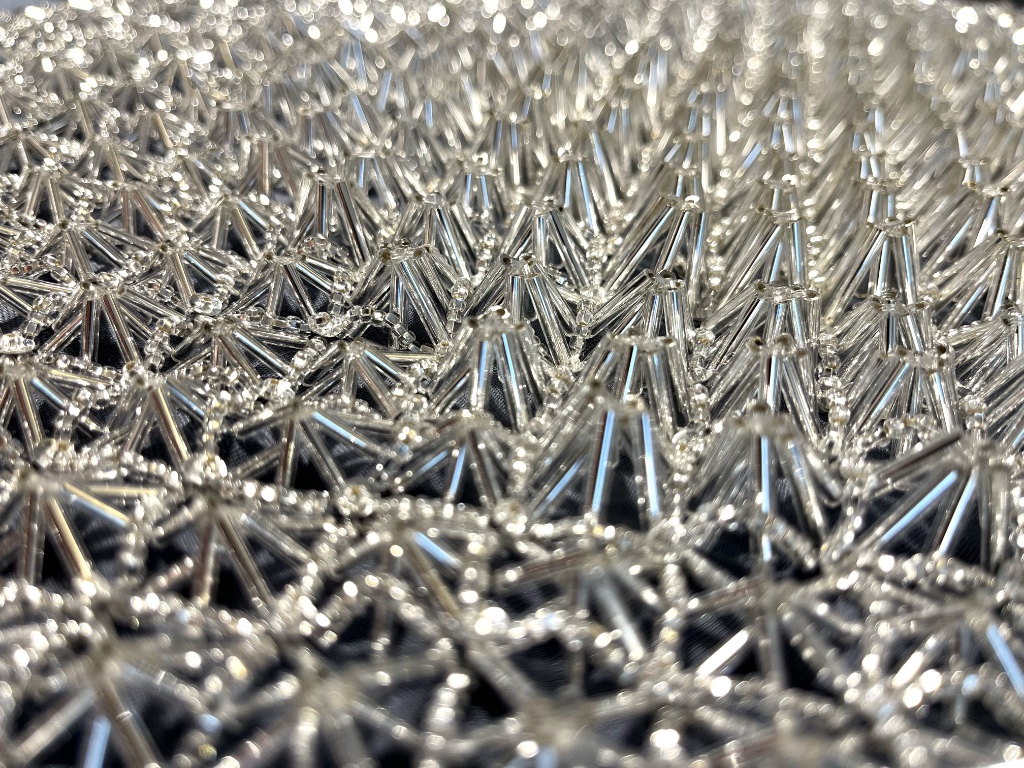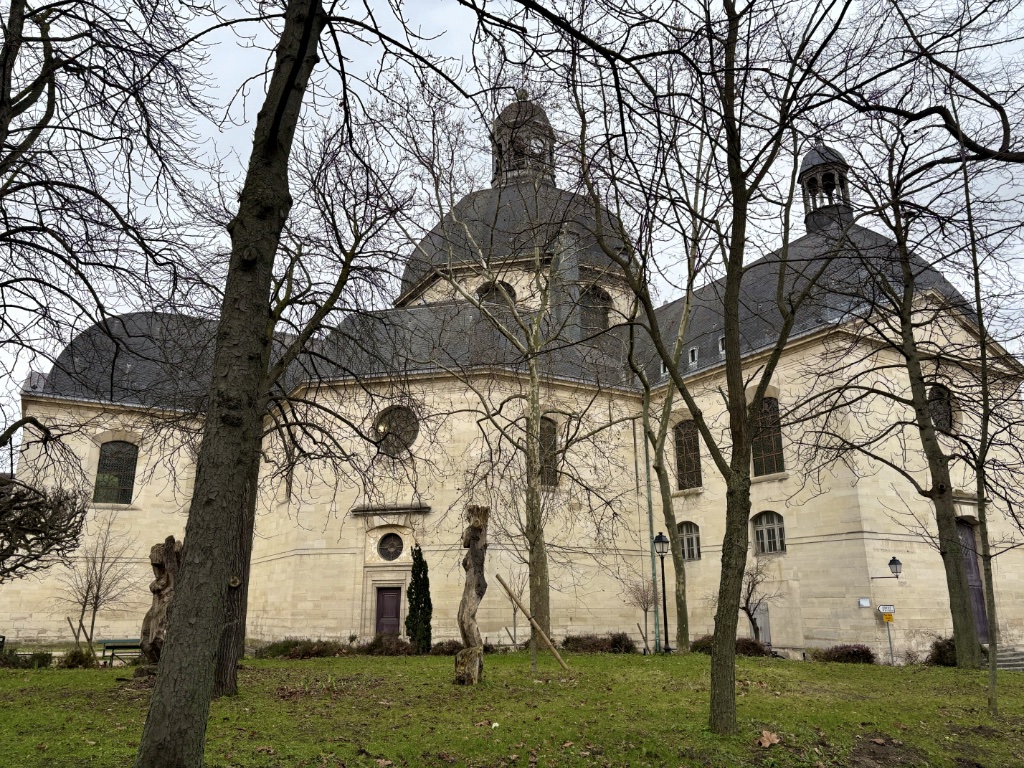Sometimes the most interesting exhibitions are held in the strangest places. A couple of weeks ago, I received an intriguing invitation to see a new “immersive” work of art in, of all places, the pulmonology department of the Pitié-Salpêtrière Hospital. I couldn’t resist, in good part because I am fascinated by this sprawling Parisian hospital, the largest in France, which forms a city within a city (more on that at the end of this article). Just finding the building the exhibition was being held in was a challenge, requiring a map provided by the information desk at the entrance to the campus and a good five-minute walk.
The work on show, “Réespiration,” by Samuel Bianchini, was conceived by the medical staff of the pulmonology department, who felt frustrated by their inability to help some patients beyond a certain point. Says Dr. Thomas Similowski, director of the department, a professor at the Sorbonne and the author of Les Superpouvoirs de la Respiration (The Superpowers of Breathing) and numerous other publications on the subject, points out that although breathing is essential to life and participates in the way we express ourselves – through sighs or singing, for example, or holding our breath when we are stressed – it is usually taken for granted and ignored. “Breathing is the only one of our vital functions that can be seen and heard,” he says. “It gives us information on our emotional state, speeding up when we are anxious, for example, and slowing down when we are calm.”
Given that illness generates anxiety in people who are suffering from dyspnea (shortness of breath), he and his colleagues began to wonder if they could develop some sort of breathing device – perhaps a work of art? – that could adapt to and influence a person’s breathing, just as we humans synchronize our breathing to those around us (even our pets), and whether that would help soothe or even improve their condition.
“Réespiration” was born of this desire to make life easier for these patients. Luckily, an association exists in France whose aim is to take such concepts and help turn them into reality: La Société des Nouveaux Commanditaires, supported by the French Ministry of Culture and the Fondation de France. Bianchini was chosen as the artistic director for the project, but a whole team of experts – specializing in musical design, machine learning, sound design, object design, textile design, embroidery, robotics, software architecture, electronics, computer science, and mechanical design and production – was needed to create this breathing robot.
The object itself has an abstract 3-D shape that vaguely resembles a human torso, fixed inside a parabolic reflector. Its three different embroidered “coats,” made by the Atelier Montex, can be changed to give it different appearances. The embroidered sequins that cover it react to the light thrown back by the reflector, which also emits sound. When visitors approach it, the work changes shape and seems to breathe. The sophisticated technology that went into creating it enables it to synchronize its “breathing” with that of the person standing in front of it and perhaps influence it. Dr. Similowski and his colleagues plan to conduct studies to determine what effect the “breathing therapy” provided by “Réespiration” can actually have on a patient’s physical state.
In the meantime, the work is on display in the department on Wednesdays from 2pm to 6pm through June 4 and on Saturdays from 2pm to 6pm through June 7. The official name of the pulmonology department is Département R3S (Respiration, Réanimation, Réadaptation respiratoire, Sommeil). It is located on the second floor of Bâtiment Antonin Gosset (ask for a map at the entrance to the hospital at 83, boulevard de l’Hôpital, 75013 Paris).
***
While you are there, take the time to explore the fascinating Pitié-Salpêtrière Hospital complex. Originally built on the order of Louis XIV as a hospice for poor women, it was soon turned into a hellish women’s prison for prostitutes and other “undesirable” women plucked off the streets by the police or turned over by husbands claiming that they were insane.
Two centuries later, the neurologist Jean-Martin Charcot conducted invasive experiments on the hospital’s female psychiatric patients, and Sigmund Freud traveled to Paris to hear his lectures on the subject. More recently, Princess Diana died in the hospital in 1997.
This is just a rough outline of the hospital’s fascinating history. I urge you to read up on it before taking a walk around its park-like campus. And make sure to visit its majestic 17th-century domed chapel, designed by architect Libéral Bruant.
See our list of Current & Upcoming Exhibitions to find out what else is happening in the Paris art world.
Favorite



